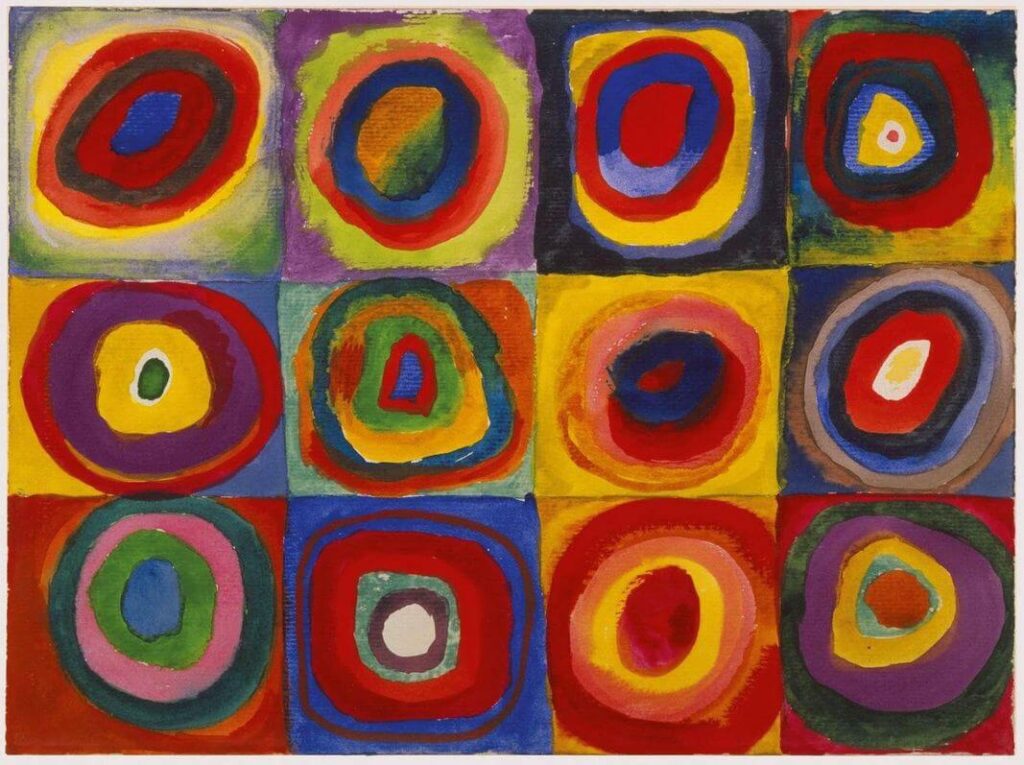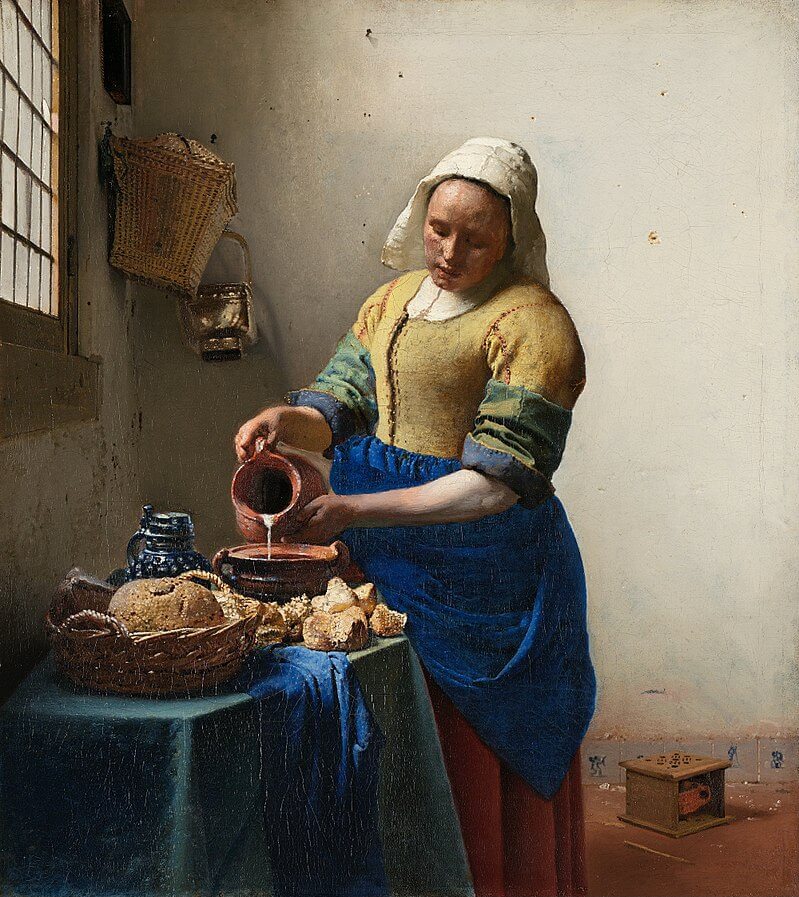Inside: An explanation of four popular art theories and how each of them defines what makes a work of art good.

What makes an artwork good?
When it adheres to design principles?
If it looks true to life?
Should it turn our worldview upside down?
Must it fill us with emotions?
The issue of what makes an artwork good has probably been debated since the first splotch of pigment touched a cave wall. It is nearly impossible to define what art is, so when we start discussing what makes an artwork impressive or worthy or good, we wade into complicated waters. Ask a group of students whether an individual artwork is good or not and you’re likely to get conflicting answers. Ask them what makes an artwork good or not and you’ll get as many answers as students you question.
Many art theories have emerged to encompass the wide variety of ideas and opinions about what art is and what it should do. The search for one art theory to rule them all may be futile, but there are arguments to be made on all sides, and everyone has a favorite.
Art Theory: Formalism

Formalism dictates that art is good when it effectively uses the elements of art and principles of design. A formalist will concentrate solely on how an artwork looks–color, line, shape, and texture. The story being told and any historical or social context behind the artwork has no bearing on whether it is considered successful. The composition is all that matters. While artists have always used the elements and principles of art, formalism really came into being with modern art and the rise of abstract and expressionist works since those pieces put special emphasis on using line, shape, and color to create a pleasing composition.
Art Theory: Imitationalism / Mimetic

The imitationalism or mimetic theory of art claims that artwork is best when it imitates life. We’ve all experienced seeing an artwork from a distance and mistaking it for the real thing, rather than a replica. Those pieces are prized under imitationalism. The most realistic, the better.
In Vermeer’s The Milkmaid, we see the creamy milk pouring from the jug. It’s easy to imagine the splashing sound it makes hitting the bottom of the container. The texture of the baskets and the woman’s clothing look real enough to reach out and touch. The play of light and shadows match what comes through our own windows. We don’t have to make any mental leaps to imagine the scene unfolding right in front of us. Mimetic artworks are instantly recognizable because of their devotion to reality.
Art Theory: Instrumentalism

An instrumentalist is not concerned with composition, only context. Through the lens of instrumentalism, the best artworks are those that convey a message or shape how we see the world. Unlike other art theories, instrumentalism says that art is good when it functions as a tool to influence or change society.
The artwork above no doubt drew a visceral reaction the moment you saw it. Did your eyes flick to the title? Were you trying to figure out what the artist was trying to say? Now imagine that you saw this artwork before World War II. As Hitler rose to power, many saw him as a harmless politician, though some knew otherwise. In this piece, Heartfield was using his art as an instrument, sounding an alarm for anyone who thought Hitler was nothing to fear.
Art Theory: Emotionalism

The emotionalism theory places emphasis on the expressive qualities of an artwork. The communication between artwork and viewer is crucial. If the art is able to elicit a feeling from the audience, then the artist has created an excellent piece. Emotionalism is unique among art theories because it is not concerned with how an observer is attracted. Varying components of an artwork can captivate different viewers, but it only matters that the artist was able to evoke a mood or idea, regardless of composition, context, or narrative.
Read more about Fate of the Animals on Art Class Curator.
Art Theories Lesson
To teach about art theories in a quick art and aesthetics lesson, I start out with a warm-up discussion question, what makes art an artwork good? I like this question because it gets students thinking more about what goes into the creation of a work of art and that art is more than just making something look pretty.
Then, I divide the students into groups and each group gets one of the above artworks with the following writing prompts:
- Make a list of questions you might ask yourself about this art.
- What makes this artwork good?
After they’ve explored their assigned artwork, we discuss their ideas to the class and I tell them about each of the art theories.
Curated Connections Library Members: Access the PowerPoint and Worksheet for this activity at this link.
What do you think makes an artwork good?
This post was originally published on June 7, 2018.

Get the Full Lesson!
This Lesson is in The Curated Connections Library!
Find the full lesson from this post along with hundreds of other art teaching resources and trainings in the Curated Connections Library. Click here for more information about how to join or enter your email below for a free SPARKworks lesson from the membership!





Art makes us feel and anything that does is.
So if I see a dirty diaper, and feel upset, that makes the diaper art?
To expand on your idea, I think art is anything man made that makes us feel the need to continue thinking and develop our thoughts on the matter.
I think limiting the effect of art to thinking process excludes something, that at least for me is even more substantial when experiencing a work of art, and that is feeling, imagination, and memory. It’s like letting your self be soaked in the situational atmosphere of the work, and thence experience certain moments of your life, certain aspects of the world around you, certain visions anew or from hitherto unseen perspective. Sometimes it is like train of associations that lead you towards strange feelings or ecstatic states of mind (by this I mean states of mind that occur mostly when you free yourself from the bonds of ‘getting things done’ mode of being, not necessarily meeting the transcendence, or whatever). Sometimes it’s like a deep longing for something inevitably past. Sometimes it’s a mood you once experienced and now it drags you into that situation and calls into life all that was asociated with it. Sometimes it reminds you of what is truly important grieving you for not attending to it for so long. And of course sometimes make you think, rethink and reconsider whatever may be the case. At least that’s how things are with me, when I attempt to reflect about it.
Wow! Another fantastic post! I’m looking forward to using this in the classroom. In particular I LOVE the piece you chose for Instrumentalism. SO relevant to today’s political situation. I’m sharing on my class’s FB page.
What do you guys think is a great grade to start teaching about these types of techniques because I think it can be translated into a lesson greatly. I think some of them can be simple enough for a younger audience and some can be more sophisticated for young adults.
We agree, this can be adapted to any age. The way you present the questions might need adapted for younger learners, but all ages can engage in the lesson.